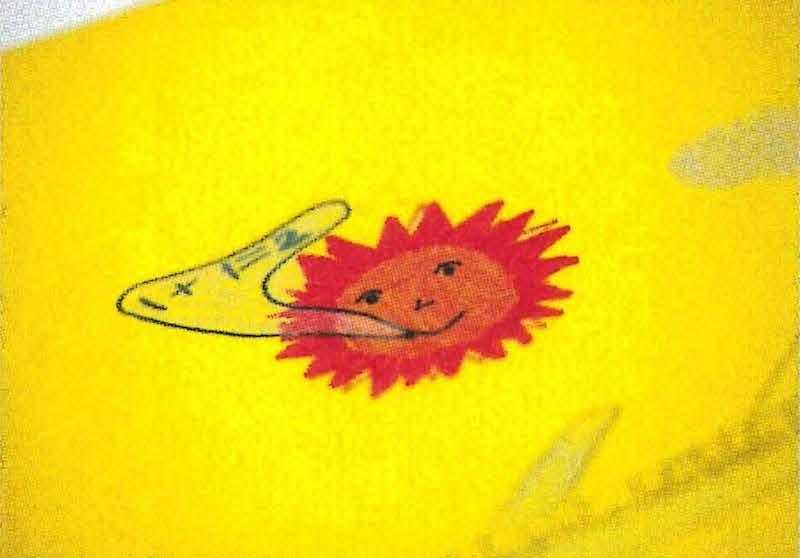
Out & About Excerpts from an Environmental Unit for Grades 3 and 4
Unit One: Habitat Habitat
Materials
- Chart paper
- Markers
- Large open space
Time
40 minutes
Grouping
Grades 3 and 4
Focus
Through a group discussion and activity, students learn that all living things require food, water, shelter and adequate space - the four components of a habitat - to survive.
Core Expectations - Grade 3
Science and Technology - Growth and Changes in Plants
- Compare the requirements of some plants and animals, and identify the requirements that are common to all living things.
Core Expectations - Grade 4
Science and Technology - Habitats and Communities
- Demonstrate an understanding of the concepts of habitat and community.
Plan
- Gather the students together.
- Brainstorm with the students all that living things need to survive.
- As a class, sort the brainstormed list into the four main components, food, water, shelter and space.
- Explain to the students that these four components make up a healthy habitat for a particular living thing and that different living things require different types of food, water, shelter and space.
- Gather the students in a large open space (carpeted area in classroom, gym or outdoors).
- Have the students form a circle.
- Number off the students from one to four and assign each number a habitat component, e.g. 1= water; 2 = shelter; 3 = space; 4 = food.
- Have the students turn their right shoulder to the middle of the circle (students should be facing left).
- Ask the students to take one step into the middle of the circle.
- Continue this until the students are close together and looking at the back of the head of the person in front of them.
- Ensure that the students are still in a circle.
- Instruct the students to listen carefully. On the count of three, they will slowly sit down on the knees of the person behind them. Once the students have remained seated for the count of five, ask them to stand together on a count of three.
- Practise this activity until you feel the students have succeeded.
- Remind students that the numbers they were given represent components of a complete habitat.
- Repeat this activity one more time. When the students are seated, tell them that the water in the habitat has become polluted. That means that all the students with number one, water, have to try to leave the circle. This will cause the circle to collapse or weaken.
- Discuss with the students the meaning of the activity.
- Encourage the idea of the interconnectedness of the habitat components: if one of the components disappears or is hurt, the whole habitat is weakened or destroyed.
Modifications
- Practise the instructions and actions before you form the circle to ensure that all students understand the instructions.
- If the group is having difficulty with the lap sitting part of the activity, try having each student put their hands on the waist of the person in front of them to guide him or her onto their knees as they all sit.
Assessment
Use a checklist to note the students’ abilities to draw conclusions from their observations.
Extensions
Have students write examples of real-life situations where habitats may be affected by the loss or weakening of one component.
Teacher Reference
Project Wild.
Unit Two: Parts of a Plant
Materials
- Sample houseplant(s) to show - include a flowering plant
- Notebooks
- Coloured markers or chalk
Time
30 minutes
Grouping
Grade 3 students only
SCIENCE & TECHNOLOGY - GROWTH & CHANGES IN PLANTS
Core Expecations
- In this mini-lesson, students learn the parts of a plant by creating a labelled diagram.
- Identify the main parts of plants and describe their basic functions.
- Record relevant observations, findings and measurements in written language, drawings, charts and graphs.
Plan
- Gather grade 3 students together.
- Ask them to look at the plant(s) and think about different parts of the plants and what they do.
- Ask them to turn to a partner and tell each other parts they have thought of.
- Draw a horizontal line for the ground.
- Tell the students you are going to draw a plant and need their help.
- Ask partners to share the parts they have thought of and, as they do so, draw these parts on chart paper, chalkboard or whiteboard.
- Demonstrate features of a labelled drawing, i.e. a title, printed labels and ruled lines from the part of the label, preferably horizontal.
- Try to include the following parts: leaf, stem, roots, flower, fruit, seed, pistil, stamen.
- Send the grade 3 students to complete a labelled diagram of their own on paper or in notebooks.
Modifications
- Provide a list of plant parts on paper so those students who have difficulty copying from the board will have a list closer to hand.
- Provide a line drawing of a plant for students who may have difficulty with fine motor skills or who you predict will spend a very long time drawing on their own.
- Ask students to write the names of the plant parts in their first language or, if they cannot do so, then to ask a peer translator or their parents to do so.
Assessment
- Check students' drawings to see if they have labelled all the parts discussed; record this information on a checklist.
- Assign levels for this assignment on the checklist according to the following criteria:
- Level 1: Only a few of the parts are labelled or there are many errors. Level 2: Some of the parts are labelled, or most are labelled, but there are some errors.
Level 3: All of the relevant parts are labelled, or most are labelled, but there are some errors.
Level 4: All of the relevant parts are labelled correctly; in addition, one or more of the following may be evident: additional parts beyond those discussed are labelled; additional information has been included; additional explanations have been added; the drawing itself contains many extra details.
Extensions
- Use a drawing or painting program such as AppleWorks or KidPix to create labelled drawings on the computer.
- Have students complete the activity “Are Trees Plants?” or “Tree Part Puzzles” in Focus on Forests.
Teacher Reference
Focus on Forests
Unit Three: Food Chains & Webs
Materials
- Chart paper
- Markers
- Paper or activity cards with one food-web role on each one, enough for each student to have one card.
- Roll of yarn or string.
Time
45 minutes
Grouping
Grade 4 students only
SCIENCE & TECHNOLOGY - HABITATS & COMMUNITIES
In this mini-lesson, students discuss different food chains and learn how these chains are connected in a web.
Core Expectations
Demonstrate an understanding of a food chain as a system in which energy from the sun is transferred eventually to animals; construct food chains of different plant and animal species; and classify animals as omnivore, carnivore and herbivore.
Plan
- Prepare food-web role cards by writing the following items on separate cards so that each student will be able to have one card: fox, mouse (2), worm (2), soil (2), leaf, acorn, seed, owl, beetle, squirrel, chipmunk, hawk, mosquito, butterfly, daisy, dandelion, maple tree, robin, ant, sunflower, walnut, bumblebee, wasp, rabbit, grass, hare, chestnut (2).
- Gather the grade 4 students together.
- Brainstorm with the students animals they know.
- Chart the food of these animals, continuing the chart until the chain gets to the sun, e.g., fox ◄mouse ◄grass ◄sun.
- Draw arrows between the organisms in each food chain, remembering that the arrow moves from the energy source to the recipient of the energy.
- Discuss with students the transfer of energy from the sun to plants and then to animals.
- Discuss the different chains with students.
- Have the students sit or stand in a circle.
- Hand out one food-web role card to each student.
- Have the students read their card and then hold their role cards facing out in order for the other students to read the cards.
- Explain to students that they are to pass the string, which represents energy and interconnectedness.
- Start as the sun and holding onto one end of the string or yarn, pass your energy (the string or yarn) to something you're connected to, e.g., a plant.
- Have the student now holding the string hold onto one part of the string and pass the roll to an organism to which they are connected.
- Continue this until everybody is holding onto the string.
- Have the last student pass you the remaining string, ensuring that the string is taut.
- Discuss with students the concept of a food web, a variety of food chains which are connected.
- Ask the students what would happen if we got rid of one of the organisms in the web.
- Have one student, representing an organism removed from the web, tug on the string.
- Instruct each student to tug on the string when they feel a tug until all students are tugging on the string.
- Discuss with the students the concept of interconnectedness; i.e., when one organism in the food web is affected, the complete food web is affected.
- Repeat this activity with another scenario; e.g., the owl's eggs are affected by pesticides and the babies are damaged, therefore the owl is affected and should start tugging their string.
- Conclude this activity with a discussion of interconnectedness.
Modifications
Assist students by including pictures of the different roles in the food web on the role cards.
Assessment
Using a checklist, note how students are able to synthesize their observations to draw meaningful conclusions during the class discussion.
Extensions
Have the students research one animal’s role in the food chain.
Teacher References
- Project Wild.
- What Are Food Chains and Webs?
These units are excerpted from Out & About an environmental unit for Grades 3 and 4 written for ETFO by Toronto teachers Judy Kramer and Carina van Heyst. Out & About is published as part of ETFO's Curriculum Connections series and is available through Shop ETFO. For more information, call ETFO at (416) 962-3836/1-888-838-3836 or Shop ETFO online - www.etfo.on.ca. Photos taken on location at Grenoble Public School, Toronto.
Bibliography
Canadian Wildlife Federation. Project WILD Activity Guide. Ottawa. Canadian Wildlife Federation. 1999. ISBN 1-55029-082-7. Project WILD is part of the WILD Education family of environmental education programs that emphasize wildlife and other natural resources. Excellent resource for ail age groups. For information about Project WILD and WILD education workshops and resources, contact www.wildeducation.org. Kalman, Bobbie and Jacqueline Langille. What are Food Chains and Webs? Crabtree Publishing Company. 1998. ISBN 0-86505-876-8. Ministry of Natural Resources (Ontario), Forests Canada, Focus on Forests: An Activity Guide for Primary and Junior Teachers on Forests and Forest Management. Queen’s Printer for Ontario. 1989. ISBN 0-7729-5765-7. For further information about this program, contact: Education Coordinator, Communications Services Branch, Ministry of Natural Resources, Room 5340, Whitney Block, Queen’s Park, Toronto, ON M7A 1W3.

